by Amy Archuleta
Have you ever wondered exactly what is happening in an SDS PAGE system when you turn on the power source and the wires start bubbling?
You are not alone! Here are the answers to the science behind all those different pHs and gel layers.
SDS-PAGE Basics
What exactly is SDS-PAGE?
It is an acronym for Sodium Dodecyl Sulfate–Polyacrylamide Gel Electrophoresis.
SDS is a detergent, an anionic (negatively charged) surfactant (compound that lowers surface tension). In the case of proteins, SDS disrupts the non-covalent bonds in protein molecules.
PAGE is a biochemical technique that allows for proteins to be separated by their electrophorectic mobility (how fast they move in an electric field). In the case of SDS-PAGE, they are separated by their size (molar mass), and not their charge.
What causes the movement of the molecules through the gel?
An electric current. When you put the lid on your gel box and turn on the current, the negatively charged proteins will try to move through the gel towards the positively charged anode. The cathode and anode are the wires in your tank that are bubbling once you turn on the system.
What causes all those bubbles?
H2 and O2. Once the electric current is applied, the anode and cathode are involved in redox reactions that remove electrons from water molecules in the running buffer, resulting in gas formation. At the negatively charged cathode, positively charged hydrogen ions become hydrogen gas. At the positively charged anode, negatively charged oxygen ions become oxygen gas. You may observe more bubbles at the cathode than at the anode. This is because there are two hydrogen atoms for every one oxygen in a water molecule. There will be twice as many hydrogen gas molecules formed.
The Chemical Ingredients and What they Do
What exactly does SDS do?
It unfolds proteins. Application of SDS to proteins causes them to lose their higher order structures and become linear. Since SDS is anionic (negatively charged), it binds to all the positive charges on a protein, effectively coating the protein in negative charge.
Why do we want the protein coated in negative charges?
To remove charge as a factor in protein migration through the gel. SDS binds to proteins with high affinity and in high concentrations. This results in all proteins (regardless of size) having a similar net negative charge and a similar charge-to-mass ratio. In this way, when they start moving through a gel, the speed that they move will be dependent on their size, and not their charge.
After getting hit with SDS, is a protein’s size the only thing that affects its migration through the gel?
It is by far the biggest factor. However, SDS can bind differently to different proteins. Hydrophobic proteins may bind more SDS, and proteins with post-translational modifications such as phosphorylation and glycosylation may bind less SDS. These effects are usually negligible, but not always, and should be considered if your protein is running at a different molecular weight than expected.
What is in the running buffer?
Tris, glycine, and SDS, pH 8.3. Tris is the buffer used for most SDS-PAGE. Its pKa of 8.1 makes it an excellent buffer in the 7-9 pH range. This makes it a good choice for most biological systems. SDS in the buffer helps keep the proteins linear. Glycine is an amino acid whose charge state plays a big role in the stacking gel. More on that in a bit.
What is in the sample loading buffer?
Tris-HCl, SDS, glycerol, beta mercaptoethanol (BME), Bromophenol Blue. This is the buffer you mix with your protein samples prior to loading the gel. Again with the Tris buffer and its pKa. The SDS denatures and linearizes the proteins, coating them in negative charge. BME breaks up disulfide bonds in the proteins to help them enter the gel. Glycerol adds density to the sample, helping it drop to the bottom of the loading wells and to keep it from diffusing out of the well while the rest of the gel is loaded. Bromophenol Blue is a dye that helps visualization of the samples in the wells and their movement through the gel. Sample loading buffer is also known as Laemmli Buffer, named after the Swiss professor who invented it around 1970.
What is in the gels?
Tris-HCl, acrylamide, water, SDS, ammonium persulfate, and TEMED. Although the pH values are different, both the stacking and resolving layers of the gel contain these components. Tris and SDS are there for the reasons described above. Ammonium persulfate and TEMED work together to catalyze the polymerization of the acrylamide. The Cl- ions from the Tris-HCl work with the glycine ions in the stacking gel. Again, more to come on that.
Acrylamide Sets the Pace
What is in the gel that causes different sized protein molecules to move at different speeds?
Pore size. When polyacrylamide is combined in solution with TEMED and ammonium persulfate, it solidifies, effectively producing a web in the gel. It is through this web that the linearized proteins must move. When there is a higher percentage of acrylamide in the gel, there are smaller pores in the web. This makes it harder for the proteins to move through the gel. When there is a lower percentage, these pores are larger, and proteins can move through more easily.
Why are there different percentages of acrylamide in gels?
To optimize the resolution of different sized proteins. Different percentages of acrylamide change the size of the holes in the web of the gel. Larger proteins will be separated more easily in a gel that has a lower percentage of acrylamide – because the holes in the web are larger. The reverse is true for smaller proteins. They will resolve better in a gel with a higher acrylamide percentage because they will move more slowly through the holes. Small proteins will fly through a low percentage gel and may run off the end of the gel.
Gel Layers: It Takes Two
WHAT are there two layers in the gel?
The stacking layer and the resolving layer. The top (stacking) layer has a lower percentage of acrylamide and a lower pH (6.8) than the bottom (resolving) layer, which has more acrylamide and a higher pH (8.8). SDS PAGE is run in a discontinuous buffer system. There is discontinuity not only between the gels (different pH values and acrylamide amounts), but also between the running buffer and the gel buffers. The running buffer has different ions and a different pH than the gels.

WHY are there two layers in the gel?
They have different functions. The stacking layer is where you load your protein samples. The purpose of the stacking layer is to get all of the protein samples lined up so they can enter the resolving layer at exactly the same time. When you load a gel, the wells are around a centimeter deep. If your samples entered the resolving layer this spread out, all you would see is a big smear. The resolving layer then separates the proteins based on molecular weight.
How does the stacking layer do its job?
Low acrylamide content and low pH. The low percentage of acrylamide in the stacking layer allows for freer movement of the proteins and helps them line up to enter the resolving layer together. The lower pH allows glycine to be in its zwitterionic state.
Wait – did you just sneeze?
Close. I said glycine is a zwitterion at pH 6.8 in the stacking buffer.
It’s All About the Glycine
So what’s up with glycine?
A lot. It is the key to the discontinuous buffer system. It is the ionic state of glycine that really allows the stacking buffer to do its thing. Glycine is an amino acid with the chemical formula NH2-CH2-COOH. The charge of its ion is dependent on the pH of the solution that it is in. In acidic environments, a greater percentage of glycine molecules become positively charged. At a neutral pH of around 7, the ion is uncharged (a zwitterion), having both a positive charge and a negative charge. At higher pHs, glycine becomes more negatively charged.

What does glycine’s charge have to do with the stacking layer?
Everything. Glycine is in the running buffer, which is typically at a pH of 8.3. At this pH, glycine is predominately negatively charged, forming glycinate anions. When an electric field is applied, glycinate anions hit the pH 6.8 stacking buffer, and change to become mostly neutrally charged glycine zwitterions. That means they move slowly through the stacking layer toward the anode due to their lack of charge.
By contrast, the Cl- ions (from the Tris-HCl in the gel) move at a faster rate towards the anode. When the Cl- and glycine zwitterions hit the loading wells with your protein samples, they create a narrow but steep voltage gradient in between the highly mobile Cl- ion front (leading ions) and the slower moving, more neutral glycine zwitterion front (trailing ions). The electromobilities of the proteins in your sample are somewhere in between these two extremes, and so your proteins are concentrated into this zone and herded through the stacking gel between the Cl- and glycine zwitterion fronts.
What happens to glycine zwitterion in the resolving layer?
It gets real negative, real fast. When the Cl- and glycine zwitterion fronts hit the resolving layer at a pH of 8.8, the glycine ions gain a lot of negative charges. They are no longer predominately neutral and take off towards the positively charged anode as glycinate anions. Unaffected by polyacrylamide, they speed past the protein layer, depositing the proteins in a tight band at the top of the resolving layer.
Final Resolution
What happens to the proteins in the resolving layer?
They slow way down and start to separate. The proteins moved more easily through the stacking layer because of the low percentage of acrylamide. Now that they are starting into the resolving layer which has a higher percentage of acrylamide, they have to slow down. Also, without the voltage gradient from the Cl- and glycine zwitterion fronts, they can separate.
How does this all end?
Hopefully with beautifully tight bands separated by molecular weight. The different sized proteins run at different speeds through the gel, the big ones taking longer as they try to navigate the polyacrylamide web. The point at which they stop moving is dependent on when you turn off the power source. A good time to do this is usually when the dye-front running ahead of your protein samples (the blue line) reaches the very end of the gel. If you used the correct percentage of acrylamide, the molecular weight range of your protein of interest should be separated perfectly along the length of your gel!

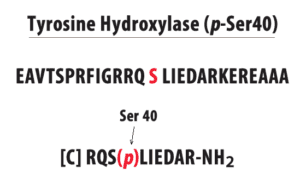
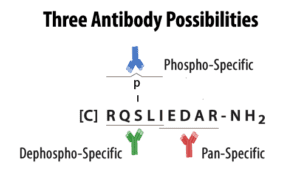
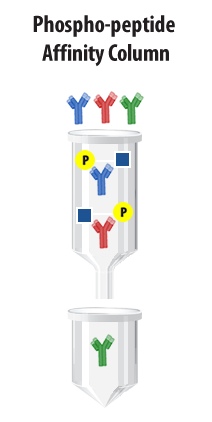

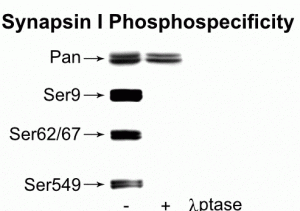
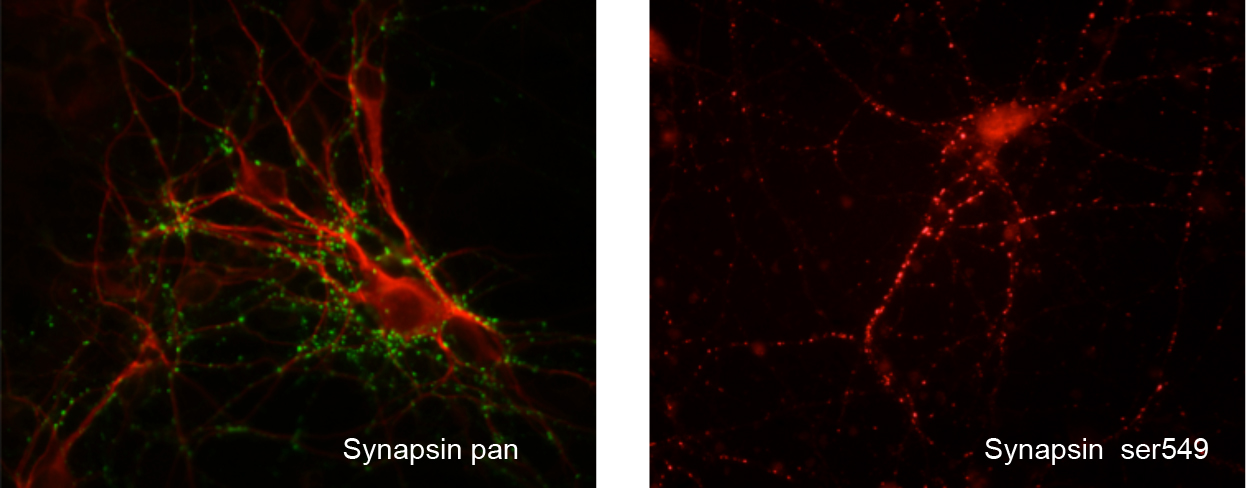














 Most scientists use electroblotting to transfer their proteins from gels to membrane. A “transfer sandwich” of filter paper – gel – membrane – filter paper is placed between two electrodes. (In wet transfer systems, there is a sponge on either side of the sandwich.) The negatively charged proteins in the gel are pulled in an electric current toward the positively charged anode and into the membrane. Since the gel and membrane are sandwiched tightly during the procedure, the proteins maintain the separation they achieved during the SDS-PAGE electrophoresis. Prior to electroblotting, protein transfer could be performed through capillary transfer. This involves the same sandwich of filter paper, membrane, and gel, but relies on capillary action to pull transfer buffer from a lower reservoir, through the gel/membrane, and to the filter paper on the top, bringing the proteins with it and depositing them on the membrane. This method is not frequently used due to the lengthy procedure time, but it is decidedly less expensive than electroblotting because no fancy apparatus is needed.
Most scientists use electroblotting to transfer their proteins from gels to membrane. A “transfer sandwich” of filter paper – gel – membrane – filter paper is placed between two electrodes. (In wet transfer systems, there is a sponge on either side of the sandwich.) The negatively charged proteins in the gel are pulled in an electric current toward the positively charged anode and into the membrane. Since the gel and membrane are sandwiched tightly during the procedure, the proteins maintain the separation they achieved during the SDS-PAGE electrophoresis. Prior to electroblotting, protein transfer could be performed through capillary transfer. This involves the same sandwich of filter paper, membrane, and gel, but relies on capillary action to pull transfer buffer from a lower reservoir, through the gel/membrane, and to the filter paper on the top, bringing the proteins with it and depositing them on the membrane. This method is not frequently used due to the lengthy procedure time, but it is decidedly less expensive than electroblotting because no fancy apparatus is needed.

 These abnormalities (or normalities if your technique needs improvement) are invisible on a blot with no Ponceau S stain but become terrifyingly obvious after staining. They can happen in both semi-dry and tank (wet) transfer systems.
These abnormalities (or normalities if your technique needs improvement) are invisible on a blot with no Ponceau S stain but become terrifyingly obvious after staining. They can happen in both semi-dry and tank (wet) transfer systems.


 If the transfer sandwich has inconsistent pressure across the height of the membrane, horizontal waviness can appear. In the blot at right, it is clear that the gel was not tightly pressed against the membrane during transfer, allowing for buffer to pass between the two. At the top of the membrane, this resulted in the transferring protein “swimming” from one to the other and not maintaining its exact position. At the bottom of the membrane, what appears to be the edge of the gel is wavy and it is clear that swimming protein deposited itself beneath the gel’s edge.
If the transfer sandwich has inconsistent pressure across the height of the membrane, horizontal waviness can appear. In the blot at right, it is clear that the gel was not tightly pressed against the membrane during transfer, allowing for buffer to pass between the two. At the top of the membrane, this resulted in the transferring protein “swimming” from one to the other and not maintaining its exact position. At the bottom of the membrane, what appears to be the edge of the gel is wavy and it is clear that swimming protein deposited itself beneath the gel’s edge.

 One of the main reasons that we transfer proteins from gels to membranes before probing with antibody is that gels are so fragile. When removing a gel from between the glass plates, placing it in the transfer apparatus, and assembling the sandwich, it is very easy to tear the gel. This doesn’t have to spoil your transfer, as the rest of the blot is probably fine. However once again it is vital to stain your membrane with Ponceau S to visualize and mark the problem area.
One of the main reasons that we transfer proteins from gels to membranes before probing with antibody is that gels are so fragile. When removing a gel from between the glass plates, placing it in the transfer apparatus, and assembling the sandwich, it is very easy to tear the gel. This doesn’t have to spoil your transfer, as the rest of the blot is probably fine. However once again it is vital to stain your membrane with Ponceau S to visualize and mark the problem area.